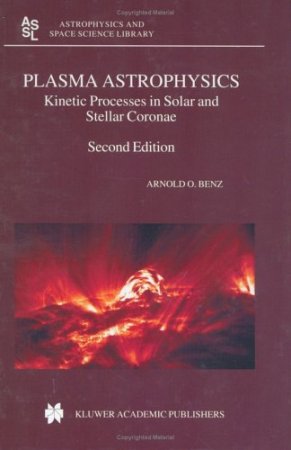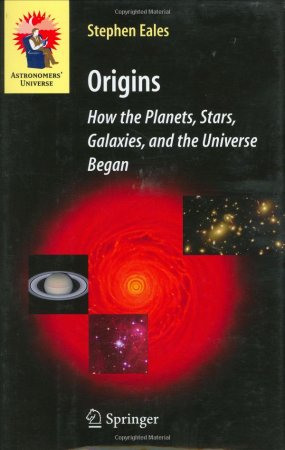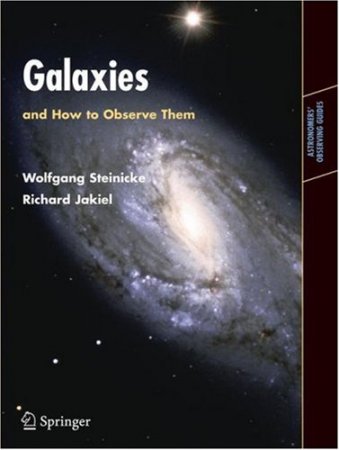НавигацияАрхив новостейСтатистика |
Plasma Astrophysics: Kinetic Processes in Solar and Stellar CoronaeThis thoroughly revised textbook is a basic introduction to plasma phenomena in solar and stellar coronae emphasizing non-MHD aspects. The natural way in which the author unifies observations and theory gives a wide perspective to the subject. An important feature is the lucidly written presentation of the fundamentals of plasma physics. The basic theory thus developed is then extended to some exemplary and important observations of coronal dynamics, such as coronal currents, particle acceleration, propagation of particle beams, and shocks. Out Of The Blue A 24-Hour Skywatcher GuideIn Out of the Blue skywatcher John Naylor offers practical advice about where and when you can expect to see natural phenomena, what you will see and how to improve your chances of seeing it. Naylor takes in both the night and the day sky, and deals only with what can be seen with the naked eye. Drawing on science, history, literature and mythology, and assuming only basic scientific knowledge, Out of the Blue is for everyone who enjoys being outdoors and who feel curious or puzzled about things optical and astronomical.John Naylor was born in England, but spent his childhood in Peru. A graduate of London University with a degree in philosophy, he teaches physics at a secondary school in London. Origins: How the Planets, Stars, Galaxies, and the Universe BeganThis book is about the origin questions - the questions of how the planets, the stars, the galaxies, and the Universe itself were formed. These are the biggest questions in astronomy, and in the last decade, there has been a revolution in observational astronomy which has meant that we are very close to answering three of the four big questions. It is therefore a propitious time for this book. Marswalk One: First Steps on a New Planet"Marswalk One: First Steps on a New Planet" addresses the question of why we should embark on a journey to Mars, documenting what the first human crew will do when they place their feet in the red dust of the planet. The book also addresses why we need to carry out these tasks and, more importantly, what a human crew could achieve that an automated mission could not. Understanding the clear benefits of sending a human crew to the surface of Mars, and how these benefits can be seen back on Earth, is the key to sustained long-term public and political support for the programme in terms of cash and commitment. The book accepts that the journey will be made, but does not specify precisely when. Flight time, and how to get to and from the planet are discussed briefly, to understand why the suggested duration spent at Mars is reasonable. The main objective of the work is to look at what science will be done on the surface – supported by orbital operations – and what hardware and technology will be employed to achieve the mission objectives. This analysis is drawn from previous experiences in manned and unmanned space programmes, including Apollo, Skylab, Salyut/Mir, Shuttle and ISS, Viking, Luna/Lunokhod, and recent Mars missions such as Pathfinder and Global Surveyor. In addition, new interviews with key personalities involved in planning Martian exploration, and discussions about current thoughts on what we need to accomplish on Mars when we get there, will provide a lively and thought provoking account that could generate fresh debate. When the decision is finally made to go to Mars, it will be made in the knowledge that most of the world knows why we are going and what benefits mankind will see for the effort. The authors’ primary objective is to begin this understanding. Recent Advances in General RelativityPapers from the Discussion Conference on Recent Advances in General Relativity, held at the U. of Pittsburgh, May 1990, survey the interacting fields of classical general relativity, astrophysics, and quantum gravity. Some of the remarks made following the invited papers are also included. The conference also included three workshops--on classical gravity, quantum gravity, and numerical relativity - which are reported on by their organizers. Human Vision and The Night Sky: How to Improve Your Observing SkillsThis book is intended for amateur astronomers who are readers of Sky & Telescope magazine or similar astronomy periodicals – or are at least at the same level of knowledge and enthusiasm. In particular, those of us who have reached a point where enjoyment is fading because the challenges have run out will appreciate it, because it takes such people to the "next level" in observational astronomy. Astrophysical ConceptsThis classic text, aimed at senior undergraduates and beginning graduate students in physics and astronomy, presents a wide range of astrophysical concepts in sufficient depth to give the reader a quantitative understanding of the subject. Emphasizing physical concepts, the book outlines cosmic events but does not portray them in detail: It provides a series of astrophysical sketches. For this third edition, nearly every part of the text has been reconsidered and rewritten; new sections have been added to cover recent developments, and most of the rest has been revised and brought up to date. Gravitational Radiation, Luminous Black Holes and Gamma-Ray Burst SupernovaeBlack holes and gravitational radiation are two of the most dramatic predictions of general relativity. The quest for rotating black holes - discovered by Roy P. Kerr as exact solutions to the Einstein equations - is one of the most exciting challenges currently facing physicists and astronomers. Gravitational Radiation, Luminous Black Holes and Gamma-Ray Burst Supernovae takes the reader through the theory of gravitational radiation and rotating black holes, and the phenomenology of GRB-supernovae. Topics covered include Kerr black holes and the frame-dragging of spacetime, luminous black holes, compact tori around black holes, and black-hole spin interactions. It concludes with a discussion of prospects for gravitational-wave detections of a long-duration burst in gravitational-waves as a method of choice for identifying Kerr black holes in the Universe. This book is ideal for a special topics graduate course on gravitational-wave astronomy and as an introduction to those interested in this contemporary development in physics. Galaxies and How to Observe ThemGalaxies are perhaps the most popular of all visual targets that are sought after by visual observers. At present the only way to get up-to-date information, is to query various (often highly technical) speciality books or digging deeply into the Internet. This can be a time consuming and often frustrating task, as the data aren’t often compatible. This book satisfies the need for a modern, comprehensive review in combining the three major aspects: the physical background on the nature and data of galaxies, the relevant instrumentation and viewing techniques, and finally the targets and their individual appearance in telescopes of various apertures. To illustrate the latter, a comprehensive sample of galaxies, including quasars, groups and clusters of galaxies is presented. This combination of theoretical knowledge and practical information guarantees successful observing sessions. The book could become a standard source on galaxy observing for all kinds of amateur observers, from the beginner to the experienced. Fundamentals of Solar AstronomyThere are several textbooks available on solar astronomy which deal with advanced astrophysical aspects of solar physics, and books which provide very elementary knowledge about the Sun. This book will help to bridge the gap. It aims to stimulate interest in solar astronomy, presenting at one place the basic methods and techniques used in the field, together with the latest findings and the excitement in solar physics. As solar astronomy is becoming very popular among amateur astronomers and laymen, the book provides the practical knowledge to build simple solar telescopes and other equipment for making solar observations. Amateur astronomers have made important contributions to solar astronomy, and this book will help to guide them in their endeavours. The book can also serve as a text for undergraduate and graduate students starting out on solar physics. Using it, graduate students can easily embark on specific topics of research in solar astronomy. |
ПопулярноеКалендарь
ОпросОцените дизайн сайта
Немного рекламы |
|||||||||||||||||||||||||||||||||||||||||||||||||









